The Meyer Shipyard in Papenburg is probably the most popular tourist destination in the city. We had a visit to the shipyard on our bucket list for quite some time. And when that great package deal that included a hotel and a guided tour came along, we went for it.
Tourist activities in Papenburg seem to exclusively revolve around the shipyard. Many guests in our hotel came to Papenburg just for a guided tour of the shipyard and we even met members of the AIDAnova crew at breakfast.
It is recommended to pre-book a tour of the Meyer Shipyard. There are quite a lot of tours available, however, they sell out quickly. Visitors can call in at the tourist information centre on the brig “Frederike von Papenburg” and ask for available tickets. However, one might has to come back later if they are sold out for the day.
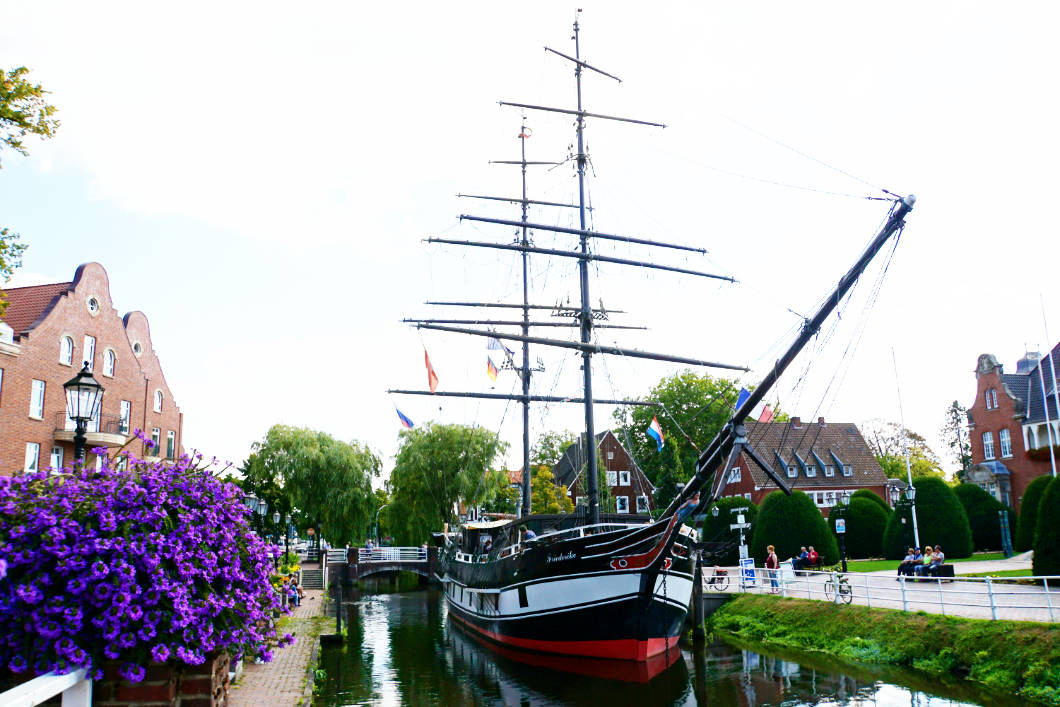
A dedicated bus carries about 50 visitors from the tourist information centre to the shipyard. The two tour guides that each take half of the guests on their tour later are already on board of the bus as well. One of the tour guides did not stop talking for the 15 minutes it took us to get to the shipyard. I didn’t retain too much from this flood of information. That wasn’t a problem, though, as all of the info was touched on again later in the tour.
The history of the Meyer Shipyard
The tour through the visitor centre starts with two short films: A promo clip called “Symphony of the Oceans” and a film about the history of the Meyer Shipyard. These two repeated almost everything the tour guide had said on the bus earlier.
The Meyer Shipyard was founded in 1795 and has been in the Meyer family for seven generations. At first, their focus was wooden ships. After the invention of steam engines and the rise of new production techniques, iron ships became part of the shipyards production line (from around 1872).
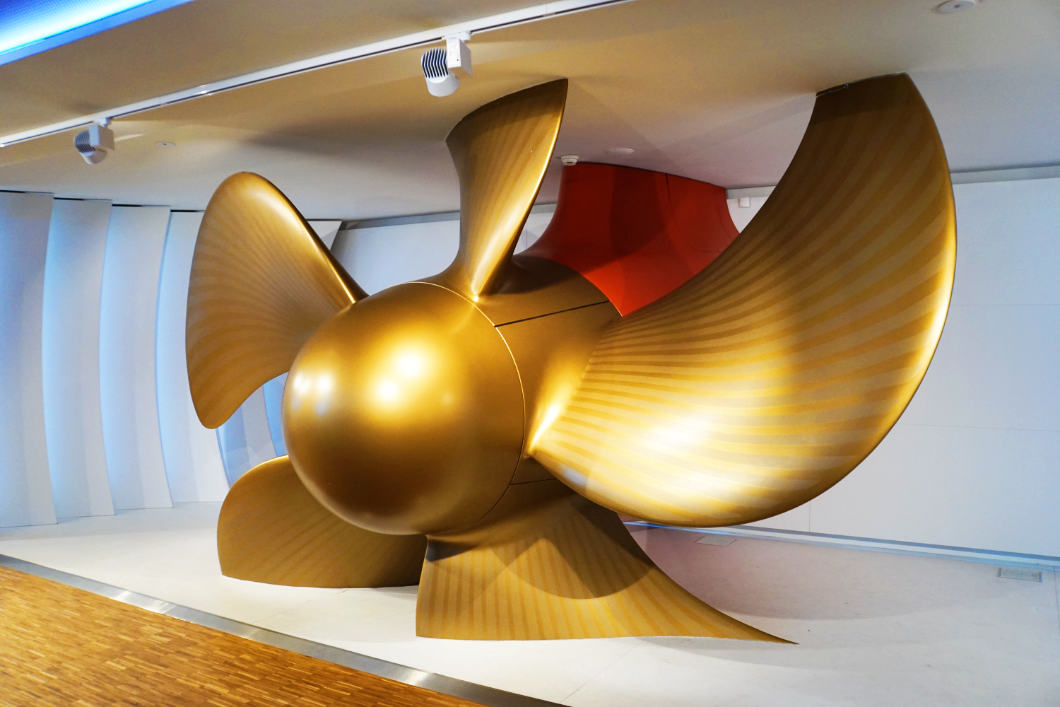
One of the most well-known ships from that era was build in 1913, the ship “Graf Goetzen”.
Its construction began in Papenburg. Then it was taken apart and its parts were packed into boxes. These boxes were shipped to Dar es Salam in Africa. From there, the boxes were transported overland all the way to Lake Tanganyika. There, the ship was put back together.
This was around the time the First World War began. To avoid the ship being taken by the English enemy, it was purposefully sunk to the bottom of the lake. After the war, the ship was brought back to the surface. It is crossing the lake to this very day and carries the name “Liemba”.
After the war, the main focus of their production were fishing boats, pilot vessels, lightships and passenger ships for coastal shipping.
The shipyard was almost completely destroyed during World War II and reconstructed afterwards. Starting in 1960 the shipyard turned out gas tankers and RORO ferries. They started work on their first-ever cruise ship in 1984, the Homeric, which was ready to launch in 1986. The short time of only two years it took them to construct the ship is spectacular and the launch that had the long side of the ship pointing into the basin must have been impressive.
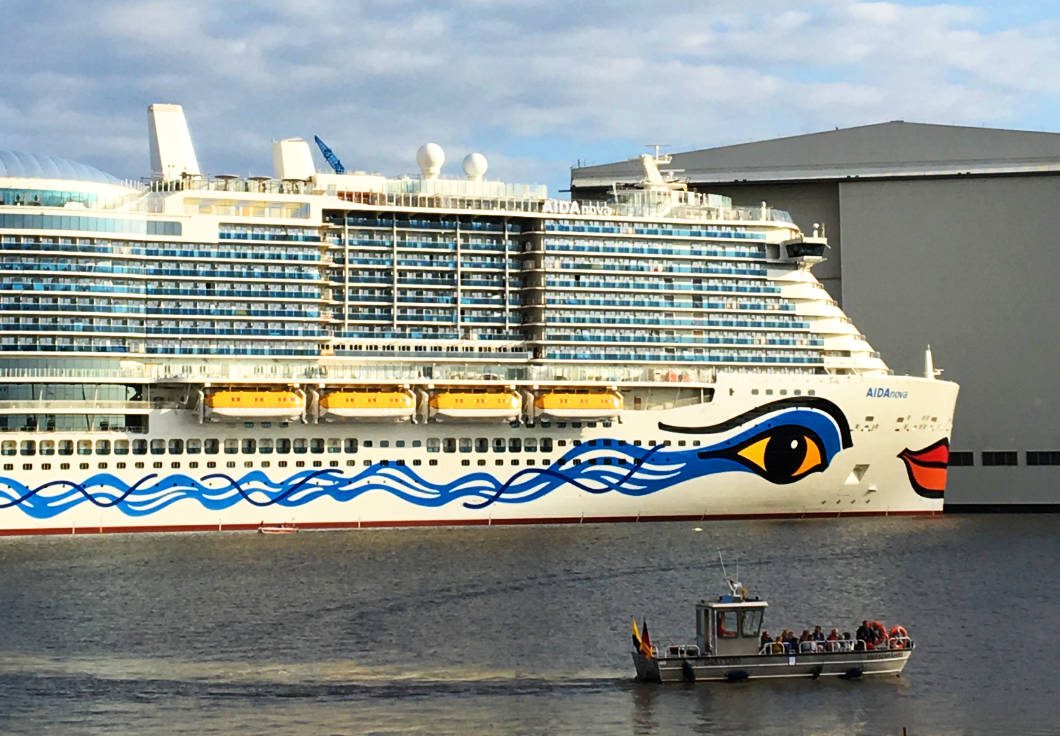
Since then cruise ships launch every year in Papenburg. Well-known shipping companies have their latest luxury liners designed and constructed here which are then released into the world via the river Ems.
Visitor Centre of the Meyer Shipya
The tour started after the two short films. First, we walked into the exhibition rooms. Models of ships, as well as maps and general information, were on display here.
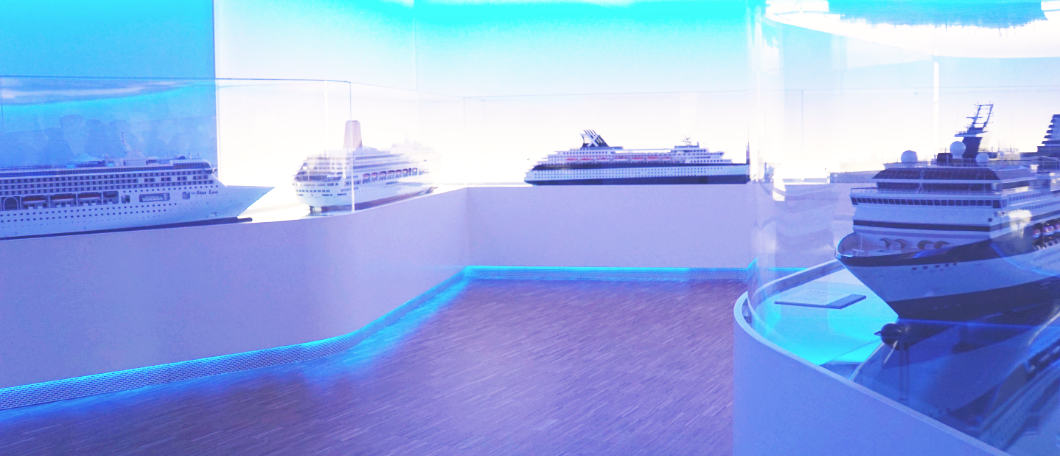
We were informed about the building process of the shipyard itself, the latest developments and – and that I personally found very interesting – what happens during the construction of a ship. I, for example, would not have thought that it takes only 36 months from the initial planning stages to completion and hand over to the customer. They have never missed a single delivery date for a ship!
My personal highlight of the tour was seeing the shipyard workshop. Before we visited we speculated that the workshop might be completely empty. For all we knew, their latest ship, the AIDAnova, had just left the workshop and was moored in the basin. We were certain it would take some time before a new ship was to be constructed in this workshop. We were so wrong.
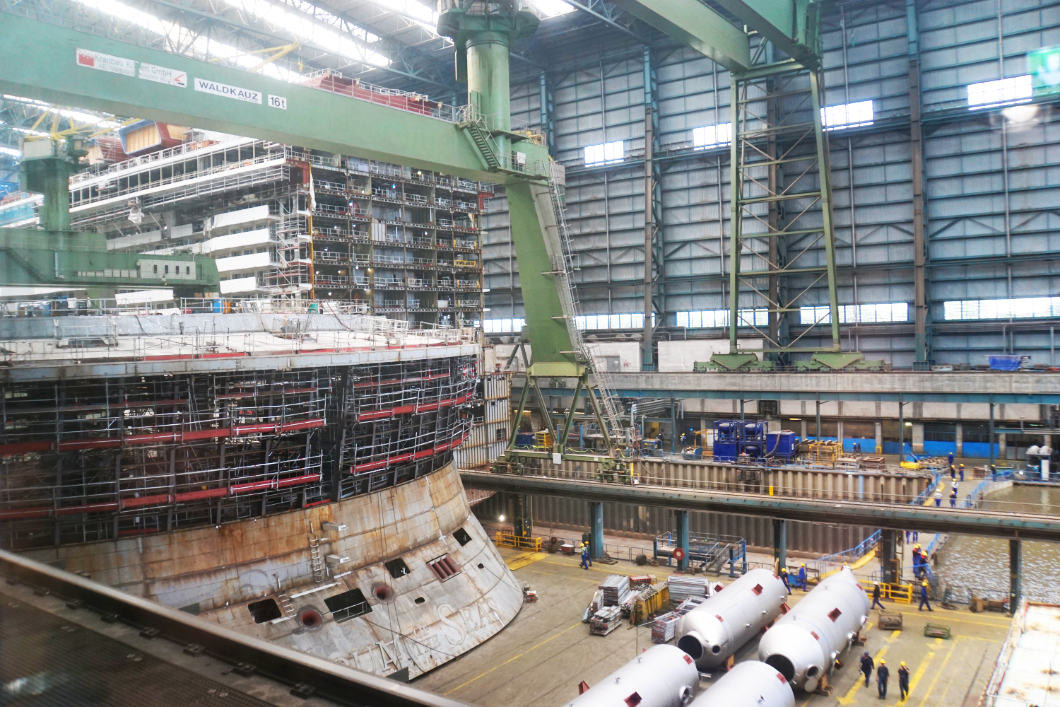
Another ship had already been placed in the dock and a tugboat came in with new parts and building material. I learned that there is always more than one ship being constructed at any given time.
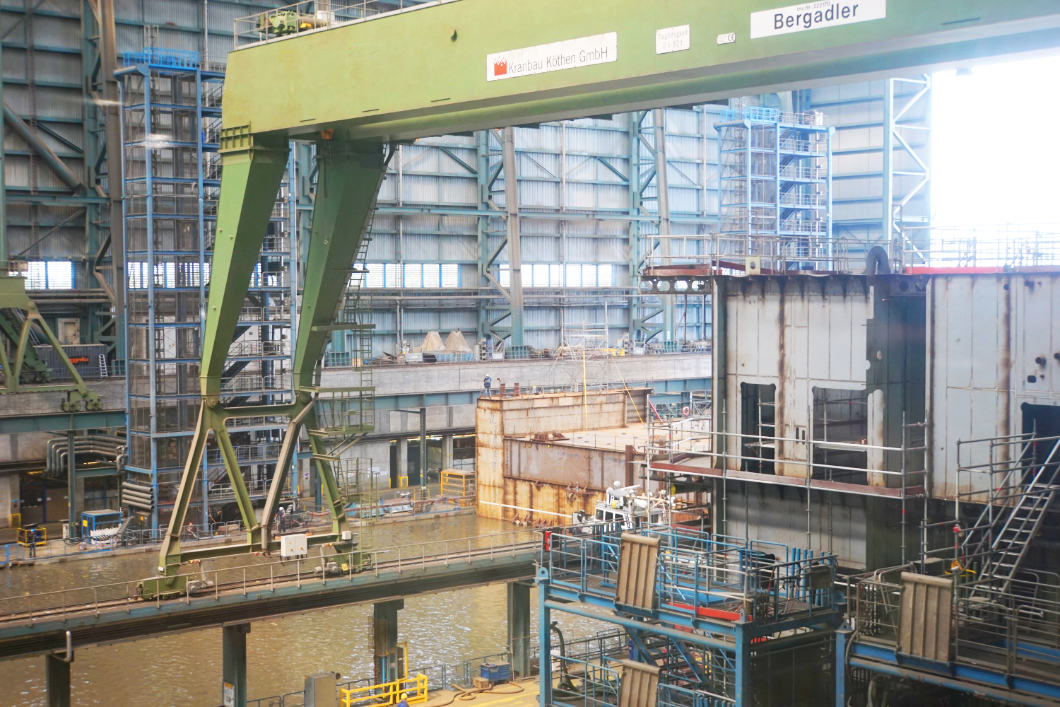
A brief explanation: Whilst the AIDAnova was constructed in the dock, workers started building the next ship in the rear of the workshop. It was, as is the norm, stored in a basin. So when the AIDA left the dock, the pieces of the next ship were waiting in front of the workshop. Those pieces had already been brought into the workshop and put together. And just like that, we were able to see the newly built ship.
On top of that, we also got to see a new piece being brought into the workshop. That modern-day ships are built like that was completely new to me. Too bad that there was not nearly enough time during the tour to properly observe what was going on in the workshop. I could have spent an eternity in front of that window!
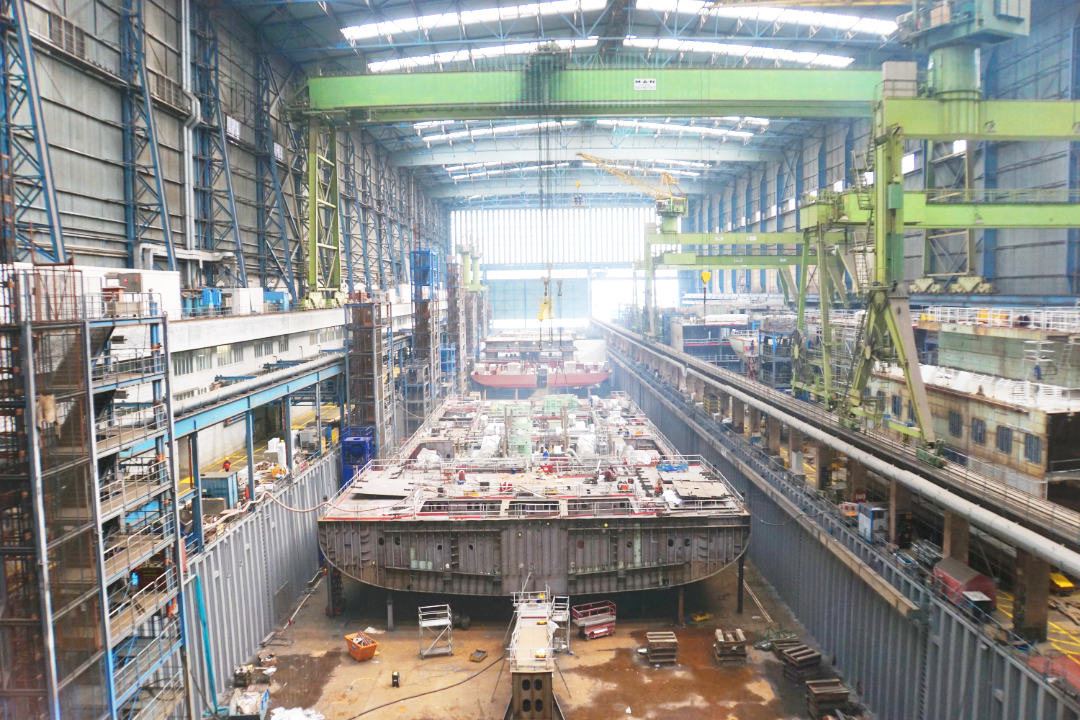
Towards the end of the tour, we were shown the smaller Meyer Shipyard workshop as well. Here, too, we saw a brand new ship that is getting ready for its handover in 2019. The ships that are being constructed in this dock are a little bit smaller.
After we had a last look at the AIDAnova we were driven back to Papenburg on board the shuttle bus. Of course, that didn’t happen without non-stop talking by the tour guide. I believe he didn’t even pause to breathe.
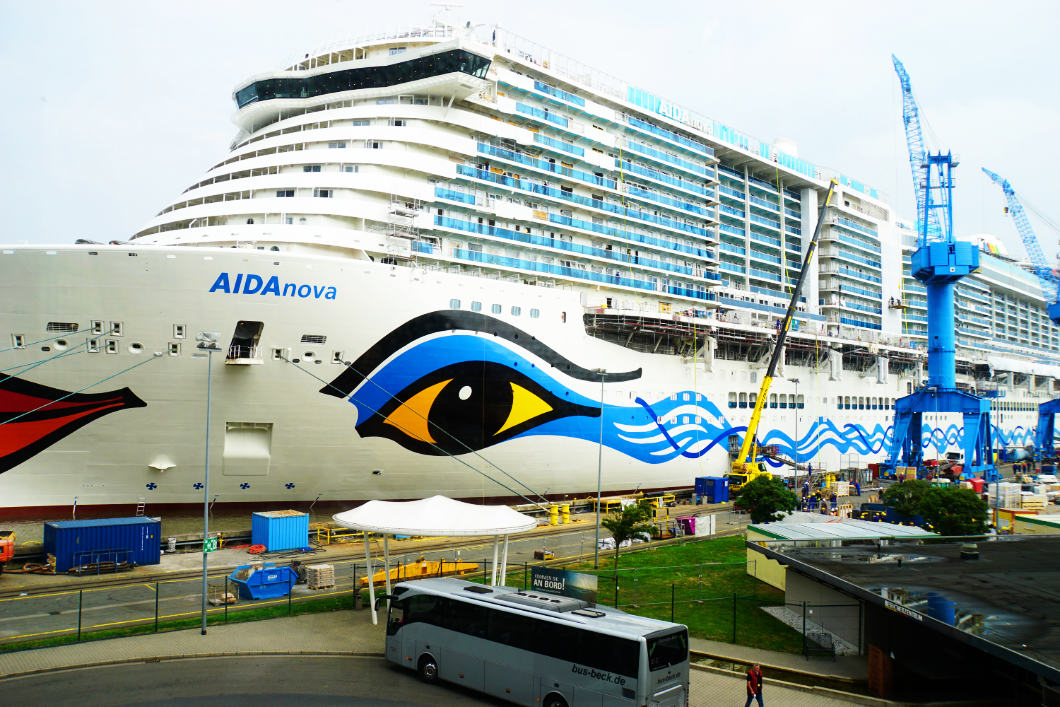
We really enjoyed our visit to the Meyer Shipyard. Especially the coming and going of ships that appeared completely uncoordinated to the untrained eye (but that was in fact highly coordinated) was immensely impressive.
The sheer size of the complex, the structure and planning – that all was an impressive piece of logistic work. I learned so much and saw so many new things during our visit that I now see cruises in a completely different light.
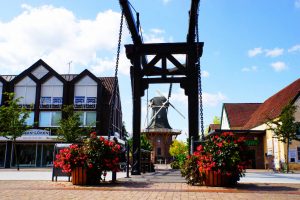
Yukti Agrawal
I love to visit shipyards and therefore the Meyer Shipyard in Papenburg looks worth visiting. And good to know that it is popular among tourist too. To visit smaller Meyer Shipyard workshop would be interesting thing to do here. It would be really exciting to see a brand new ship.
Michael Hodgson
I absolutely LOVE shipyards, so this is a place I have to put on my list to visit. The history too of the place sounds amazing. Like you I would find the workshop a highlight. Great post and super informative.
ania
I’m totally against cruises but its fascinating to see how these travelling towns are being build. It seems like a great trip.
Carol Colborn
This is a very interesting read and the photos of big ship construction were a great peek to the process in the unique industry. Thank you so much.
Danik
I have leart a lot from this post and didnt know that cruise ships were built here, but I have heard of Papenburg before, That I did know. However that photo of the cruise liner with the smiley face at the front, I have seen a few times off the coast of Nice and Monaco over the last few years. Seems funny to me to see it in this post and that it was built in papenburg. :D
Sage Scott
This would be absolutely fascinating! I feel like the only shipyards I’ve ever been exposed to are a) those in black and white videos featuring Rosie the Riveters during World War II or b) the aftermath of those shipyards 60 to 70 some years later when they are museums or historic sites.
Sandra
wow what a fascinating tour you experienced! That workshop must have been a hive of activity. There are very few shipyards like this in the southern hemisphere so you’ve really made me think about adding a tour like this to our next European trip.
Linda (LD Holland)
It sounds like a good idea to start a visit to the Papenburg ship yard with a tour. So fascinating to see the huge ships inside the building. And then to see a brand new one that was just “released”. I can see why you would look at cruises and cruise ships differently after this tour.
Candy
I have never really thought about the construction of ships, so this was a very interesting read. I would love to go on this tour and see the shipyard. How fascinating that the Liemba was sunk to the bottom and them brought back to the surface after the war. I wonder how they did that and how much that must have cost!